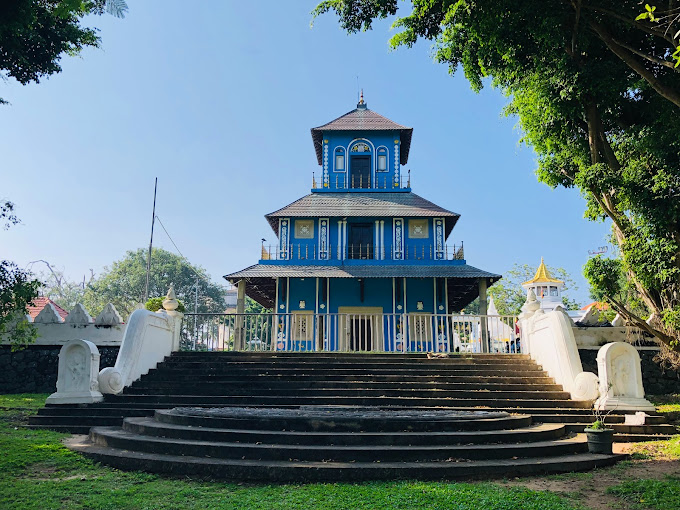- Area: Sri Lanka
- Type: Attractions
- Group: 15th-century Buddhism Viharaya
The little town of Devinuwara or the “City of Gods” is located at the southern edge of the country, about 6.5kms southeast of Matara. Devinuwara is also known as Dondra in English.
At the height of its splendor, in the 13th-15th centuries, Devinuwara has been a busy seaport and a most renowned place of pilgrimage and worship. It had been a landmark with its magnificent temple with a roof of gilded copper flashing far into the sea and undoubtedly must have been an aid to those who sailed the vast Indian Ocean. The many stone pillars variously sculptured in designs and shapes are evidence of the magnificent shrines and temples in this town that overlooked the ocean up to the latter half of the 16th century.
According to legend, Devinuwara was a flourishing city in the time is King Rawana and is connected to the Indian Epic of Ramayana. The 15th-century “Paravi Sandeshaya”, a poetical work describes the deity at Devinuwara as a destroyer of Asura. Thus it can be believed that this same deity is also “Rama” of the Ramayana.
Mahavansa, The great chronicle of Sri Lanka, tells how the “Upulvan Deiyo” thus Vishnu was selected as the guardian to protect the land of Sri Lanka and Buddhism within it at the time of Buddha’s passing away.






Popular belief is that Vishnu is a future Buddha after Natha. Therefore Vishnu always has had a high ranking among the deities worshipped by the Sri Lankans.
According to recorded history, the temple and the Devale (Shrine) was built by King Dappula I (Dappula-sen) during the 7th century. In 1587 a Portuguese army led by Thome de Sonza attacked this sacred city destroying and plundering any valuables in the places of worship. But King Rajasinghe II (1635 – 1687) of the Kandyan Kingdom managed to free the Matara from the enemy and built a Devale at Devinuwara for the deity Vishnu.
The Devale (shrine) dedicated to Deity Vishnu draws devotees from around the country throughout the year, especially during the Esala Poya Period (month of July).
The origin of the Esala festival at Devinuwara goes back to the time of King Parakramabahu II of Dambadeniya Kingdom (13th century), who is said to have restored the dilapidated temple in this holy town and got this festival celebrated regularly in honor of the deity Upulvan.

